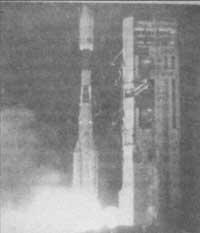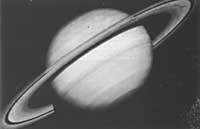Fail to release Hiparkus
1989/09/01 Elhuyar Zientzia Iturria: Elhuyar aldizkaria
The Hiparkus satellite launched on 8 August by European pitcher Ariane 4 from French Guyana has failed in the session to obtain the geostationary orbit. The engine that was to place the satellite in the geostationary orbit has failed three times. However, the engine is expected to turn on finally. However, having to spend more fuel than initially planned, the satellite day will be shorter.

Now the satellite follows the elliptical orbit, with perigee and apogee 208 and 35,000 km respectively.
The objective of the Hiparkus satellite launched by ESA (European Space Agence) is to accurately measure the positions, parallels and movements of the stars. In a 2.5 year day, the astrometric parameters of 120,000 stars will be measured with a precision of 2-4 millimeters per second and another 400,000 stars with less precision.
The Hiparkus mission has twenty years of history. It began to be planned in the early 1970s. In 1980 the ESA decided to enter its preferential program, so all the members of the agency had to participate in the development of the satellite. It began construction in 1984 and since May 1988 has been waiting for the arrival of the launch shift.
The work of the Hipparcos satellite can be excellent. Obstacles that prevent astronomical observation from Earth (atmosphere, gravity and temperature) will be avoided.

Gai honi buruzko eduki gehiago
Elhuyarrek garatutako teknologia




